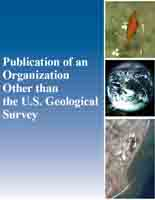Anthropogenic activities have resulted in elevated ambient nitrogen (N) and phosphorus (P) concentrations in many regions of the Sacramento-San Joaquin Delta and Suisun Bay (northern San Francisco Estuary, (nSFE). The Sacramento Regional wastewater treatment plant (SRWTP WWTP) currently acts as the largest N point source to the system, discharging 13,000-15,000 kg/d of ammonium-N (NH4) near the nSFE’s northeastern boundary. By end of 2021, SRWTP will complete major upgrades that will reduce its effluent dissolved inorganic nitrogen (DIN) loads by >65% and release the remaining DIN as predominantly nitrate (NO3). This major change in nitrogen inputs provides a unique opportunity to study ecosystem-scale responses to an altered nutrient regime. While, in general, the nSFE has not experienced some classic symptoms of nutrient over-enrichment typical in other estuaries—e.g., large phytoplankton blooms and hypoxia—other concerning nutrient- related impacts have been hypothesized, including: occurrence of harmful algal blooms (HABs) and the production of cyanotoxins; excessive growth of invasive aquatic vegetation; and declines in the abundance and nutritional quality of phytoplankton. These impacts have repercussions for the system’s food web, habitat quality, and the way we manage for transportation, recreation, water conveyance, and drinking water quality. This report develops and applies a framework for i) identifying and examining ecosystem response scenarios to the forthcoming decreased N loads; and ii) identifying opportunities, and constraints or considerations, for investigating those responses, including key data needs or knowledge gaps. Through applying this framework, we identify a set of plausible response scenarios, and evaluate the feasibility of studying or observing those responses along with key study considerations and data and knowledge gaps.


